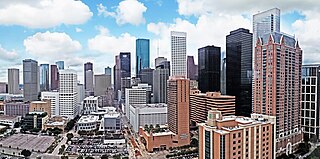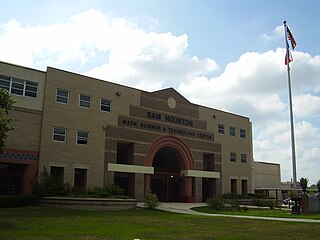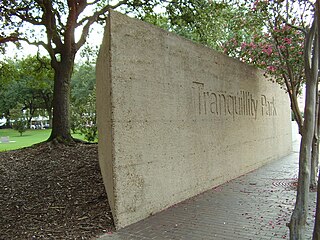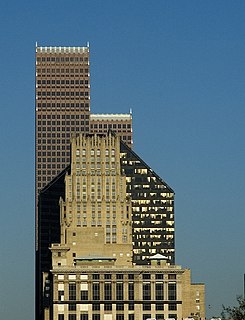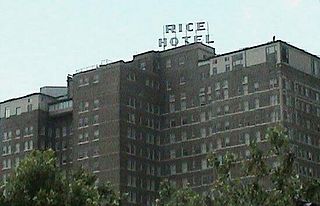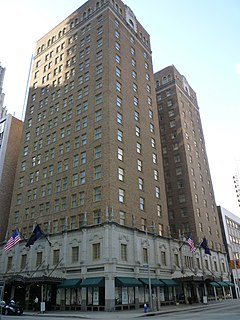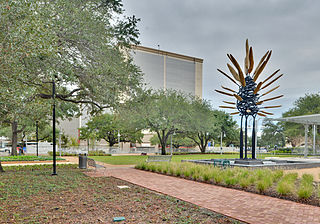History
The Sam Houston Hall was a wooden structure covering a length of three football fields erected for the 1928 Democratic National Convention. It was designed by Kenneth Franzheim and Alfred C. Finn under contract with Jesse H. Jones, who insisted on a venue that would accommodate the conventioneers and thousands of spectators. The building was optimized for air flow and equipped with heavy duty "typhoon fans." However, it was also designed as a racially-segregated facility: a substandard area fenced off by chicken wire was designated for African Americans. The hall was completed within four months. [1]
Kenneth Franzheim was an architect in Chicago and Boston in the early 1920s with C. Howard Crane. He started an independent practice in New York in 1925 and specialized in the design of large commercial buildings and airports.

Alfred Charles Finn was an American architect. He started in the profession with no formal training in 1904 as an apprentice for Sanguinet & Staats. He worked in their offices in Dallas, Fort Worth, and Houston. His credits during his tenure residential structures, but firm was a leader in steel-frame construction of skyscrapers.

Jesse Holman Jones was a Democratic politician and entrepreneur from Houston, Texas. He served as United States Secretary of Commerce from 1940 to 1945.
Sam Houston Hall hosted the first Houston Livestock Show and Rodeo in the spring of 1932. A streetcar system made the hall accessible to many Houstonians. It was also located close to the Houston Farmers' Market. The first show, in the middle of the Great Depression, drew 2,000 people. The show was held annually at the hall through 1936. [2]

The Great Depression was a severe worldwide economic depression that took place mostly during the 1930s, beginning in the United States. The timing of the Great Depression varied across nations; in most countries it started in 1929 and lasted until the late-1930s. It was the longest, deepest, and most widespread depression of the 20th century. In the 21st century, the Great Depression is commonly used as an example of how intensely the world's economy can decline.
The Sam Houston Hall was torn down after the 1936 Livestock Show and Rodeo, then replaced by the Sam Houston Coliseum. The site is now occupied by the Hobby Center for the Performing Arts. [2]

Sam Houston Coliseum was an indoor arena located in Houston, Texas. It was located at 801 Bagby Street near downtown. The Coliseum and Music Hall complex replaced the Sam Houston Hall, which was a wooden structure that had been erected on the site for the 1928 Democratic National Convention and torn down in 1936. The Public Works Administration contributed $1,329,508 to the project designed by architect Alfred C. Finn. Groundbreaking ceremonies were held on November 4, 1936. The arena opened in November 1937 and had a capacity of 9,200. It was built in conjunction with the Houston Music Hall, which was adjacent to the Coliseum.

The Hobby Center for the Performing Arts is a theater in Houston, Texas, US. Opened to the public in 2002, the theater is located downtown on the edge of the Houston Theater District. Hobby Center features 60-foot-high glass walls with views of Houston's skyscrapers, Tranquility Park and Houston City Hall. The Hobby Center is named for former Texas lieutenant governor and Houston businessman, William P. Hobby, Jr., whose family foundation donated the naming gift for the center. The center replaced the former Houston Music Hall and Sam Houston Coliseum.


